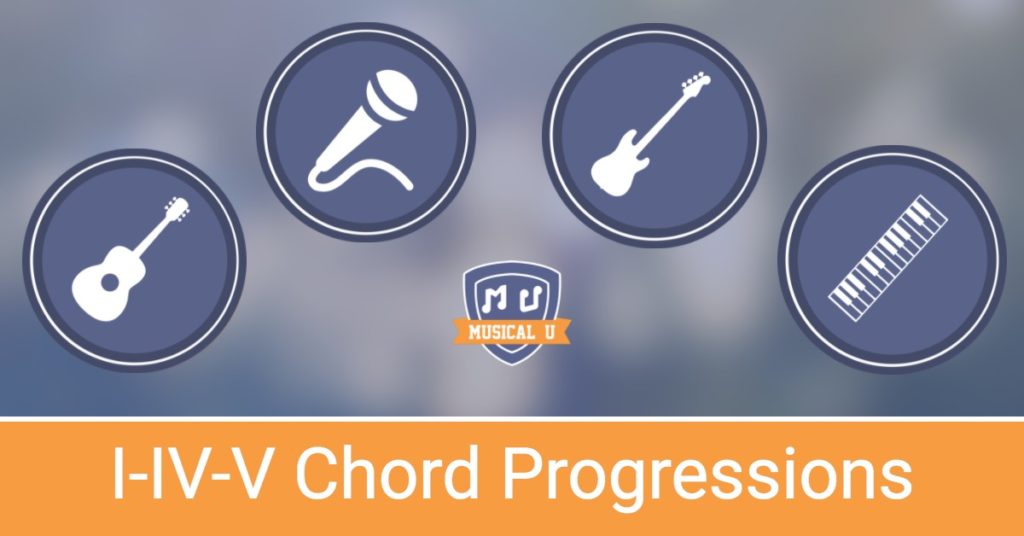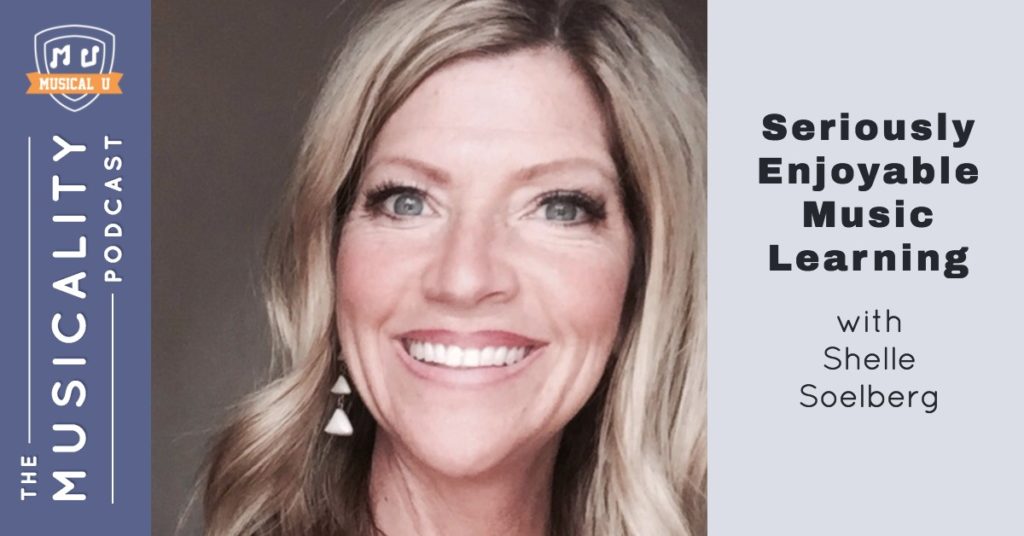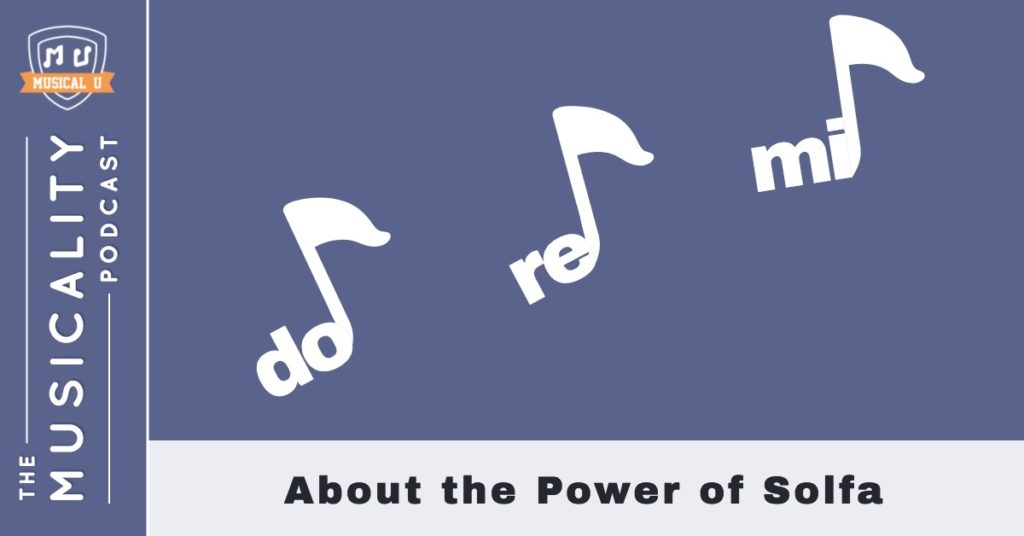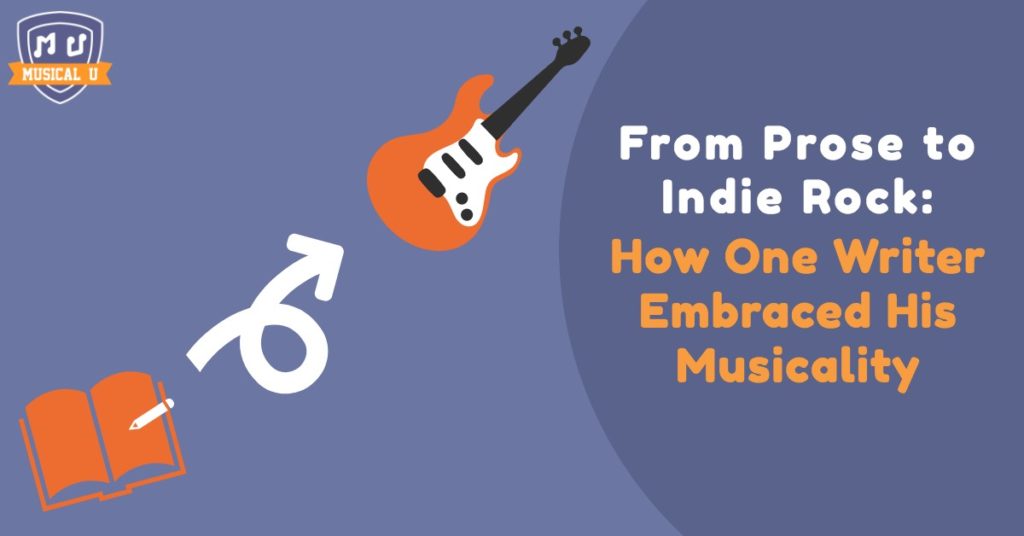In doing ear training exercises and learning the theory behind the music that you love, it’s easy to fall into the trap of feeling like it’s becoming a chore.
This week, it’s all about remembering that this learning journey should be engaging and fun. First, we bring you a chord progression that you’ll find in most of your favourite songs, and give you tips and tricks for learning and improvising over it.
The Musicality Podcast is going strong with two more episodes – one giving advice on how to survive (and even enjoy!) learning music theory, and the other giving you a peek into the world of solfege, a note-naming system that will do wonders for your ear training.
Finally, one writer-turned-musician tells his story of how he shifted gears from publishing to songwriting, and shares his realizations of what truly makes a musician.
The King of Chord Progressions
 As diverse as modern music is, what unites countless songs is a certain chord progression: I, IV, V! This progression is found across countless genres in popular music: rock ‘n’ roll, pop, country, metal, and more. Best of all, it’s instantly recognizable and easy to play on your instrument.
As diverse as modern music is, what unites countless songs is a certain chord progression: I, IV, V! This progression is found across countless genres in popular music: rock ‘n’ roll, pop, country, metal, and more. Best of all, it’s instantly recognizable and easy to play on your instrument.
In this month’s Instrument Packs, our resident pros came up with creative ways to learn this progression and put it to work, with tips for guitarists, bassists, and pianists. They go beyond simply telling you how to play the progressions, with tips customized to each instrument that will have you not only playing this progression, but embellishing it, too!
Guitar pro Dylan Welsh goes beyond the simple major I-IV-V progression to explain how you can play around with the formula and insert some minor and seventh chords in there for variety. He delves into the mechanics of the progression, explaining how it builds tension and resolves itself.
Resident bass pro Steve Lawson gives a crash course on multiple ways of building basslines over the I-IV-V progression, and gives players a way to simultaneously recognize and play these progressions. Also included: extra MP3 tracks to practice building basslines.
Sara Campbell, our resident piano pro, shares her little trick for determining the I-IV-V progression in any key using the fingering of the right hand. Going beyond the simple progression, Sara includes a mini-lesson on creative accompaniments to the basic chords.
The I-IV-V progression is the foundation for most of the popular music that we have come to enjoy since the inception of rock and roll. Yet, there is still so much that can be done within those three little chords that add interest to the music, by embellishing the bare bones of the progression:
Steve talked about how the bassline functions within this standard chord progression to add weight and depth to the chords. It’s not always as easy as just listening for the root in the bass: a good bass player will move around a bit! One way that this can be done is through walking bass lines.
On the piano, you can combine both the chordal and bass line elements discussed in guitar and the bass Resource Packs! This gives a pianist complete control over musical expression as they play through their chord progressions, for smoother transitions.
The Magic Behind Music Theory
 In 1998, Shelle Soelberg founded Let’s Play Music, a program that’s used across the United States for early music education. However, the techniques and lessons are far from being just for children – though these methods are taught in an age-appropriate way, they are advanced skills that would benefit any adult musician .
In 1998, Shelle Soelberg founded Let’s Play Music, a program that’s used across the United States for early music education. However, the techniques and lessons are far from being just for children – though these methods are taught in an age-appropriate way, they are advanced skills that would benefit any adult musician .
So, you may be surprised to learn that Shelle didn’t learn about music theory until she was in college.
Before her first theory college course, Shelle had simply been playing piano at a superficial level, without understanding the mechanics of what she was playing. So, when she was introduced to chord theory in her first year, her mind was blown. She immediately recognized the power that this type of knowledge lends to musicians, and what she had been missing out on.
Wanting to ensure that young musicians experienced this “Eureka!” moment as early in their music careers as possible, Shelle started Let’s Play Music. Students start the program at four or five years of age, to introduce them to the powerful tool of music theory while their brains are in their prime for learning this new musical language.
The program has been adopted by over 400 teachers in the United States since its inception, and has reached over 20,000 students. More recently, recognizing that adults could benefit just as much as children from the method, the company is expanding its scope to adult music education with its Let’s Play Music Presto program.
Shelle brings a refreshing look at music education and how many of us learn. She has written at length about how Let’s Play Music teaches reading notation – but with a twist: with Shelle you learn to actually hear what you’re reading, rather than just knowing what buttons to press on your instrument.
Music theory can be a difficult subject for many music students, as it is not always apparent why learning theory is important. But, once you have the full understanding of how much you have to gain from music theory, it will become an integral part of your musical journey. For another perspective, David Wallimann describes some obvious and not-so-obvious benefits of learning music theory:
In this podcast, Shelle talks about the benefit of learning chords on the piano versus other instruments. This is because you are able to see how the elements of the chord are laid out on the keyboard in a very easy way. Exploring chord construction will take you far in your songwriting and improvisation.
Owning Your Musicality
Here’s a hint: it’s not a record deal, prodigious skill, or even making a living off your music.
It’s playing music and enjoying it – whether you’re shredding on stage at the local dive bar, or tinkering with a synthesizer on your bedroom floor.
Marc Schuster was a prosperous writer with four published works and every reason to continue in his career path.
But he had a secret.
He was always much more drawn to music, regularly spending hours playing guitar and experimenting in GarageBand. Yet, he never considered himself a “real” musician, believing it was a descriptor best left to the pros.
As time went on, Mark realized that he had soured on writing long ago, and that his true passion lay in making music. An avalanche of epiphanies followed: Mark realized he didn’t have to be a prodigy to make music. That he could define “musical success” however he wanted. That he didn’t have to even necessarily make a living off of it.
He enrolled in music courses, learning the basics of pitch and tempo, familiarizing himself with recording programs, and meeting likeminded fellow musicians. He learned to express himself through sound. He learned that success lies in the joy of making music itself.
Best of all, he became comfortable with proudly saying the words, “I am a musician.”
Marc’s inspiring story of finding his inner passion for music is sure to make anyone want to spend more time with their instrument. Even if you don’t wind up a living as a musician, the additional benefits of pursuing your musical passions and the positive impact it has on your lifestyle is very well worth it.
Everyone at Musical U is thrilled to watch our students find joy in their music and overcome frustrations that many experience when trying to learn. Motivation is a key factor in students’ happiness and success, and different musicians have different sources of motivation that keeps them playing and improving.
Many believe that music is one of the skills that you learn as a child, and it is very difficult to learn after you are already grown up. Has music passed you by if you didn’t learn early in life?
Absolutely not! Learning as an adult is perfectly possible, and offers a great hobby or creative outlet for those looking for a way to express themselves!
Josh Wright offers some helpful advice for adult students who want to learn to play piano, and touches on some benefits it has for the adult brain. Josh makes a fascinating observation: many truly great musicians didn’t start out thinking that music is where they would end up.
For most, playing music is a passion that adds to the joy of our lives. Satvik Balram is one such musician, who continues to work in his full-time profession even after becoming very successful on YouTube. He may be a by-day finance professional who works long hours, but he has successfully maintained his passion for music and a creative output nevertheless.
The Power of Do-Re-Mi
 When people hear “solfege” (a.k.a. solfa), they most commonly associate it with the eponymous children’s song from The Sound of Music, or with the theory-based teachings of the conservatory.
When people hear “solfege” (a.k.a. solfa), they most commonly associate it with the eponymous children’s song from The Sound of Music, or with the theory-based teachings of the conservatory.
Neither of these could be further from the truth; solfege isn’t just for kids, nor is it some obscure concept only taught in high-level music theory.
Here’s what it is: a powerful tool that will enable you to make sense of the relationships between notes, helping you recognize melodies, play by ear, improvise, sing in tune, and more. The most common and useful system is known as movable-do solfege, in which do is assigned to the first note of the scale, re to the second, and so on. With this system, you can sing a scale in any key by singing do-re-mi-fa-so-la-ti-do.
With practice, your brain starts to associate the syllables with the pitch difference between the corresponding notes. Before you know it, you’ll be able to hear a melody and hum it out using solfege syllables. Write out your syllables, match them to the corresponding scale degrees in a key, and finally, write out your notes. Congratulations – you’ve just transcribed a piece of music using only your ears!
Solfa has many benefits to the musician as it works to develop your musical ear. Another way of incorporating solfege into your music routine is through your warm up exercises. Music educator Kathy Wurster teaches a vocal warm up that only uses solfa, which works wonders for helping to internalize the pitches.
We talk a lot about solfa in relation to scale degree recognition and being more confident in moving around intervals. In addition to solfege, using nursery rhymes and other popular tunes to become more confident in pitches is a common practice that was employed by the revolutionary music educator Zoltan Kodály.
Putting Solfa, Chords, Theory, and Confidence into Practice
With your newfound knowledge of the I-IV-V chord progression, the importance of music theory, the basics of solfa, and most importantly, a healthy dose of confidence, you’re armed with four new indispensable musical tools for ear training.
So what now?
Experiment with writing songs with the I-IV-V progression, take a deep breath and dive into music theory (even if you’re a little bit wary of it!), master your solfa syllables, and just like Shelle and Marc did, figure out a way to make this fun!
The post A Progression With Punch, Making Theory Exciting, Becoming A Musician, and Do-Re-Mi Power appeared first on Musical U.
